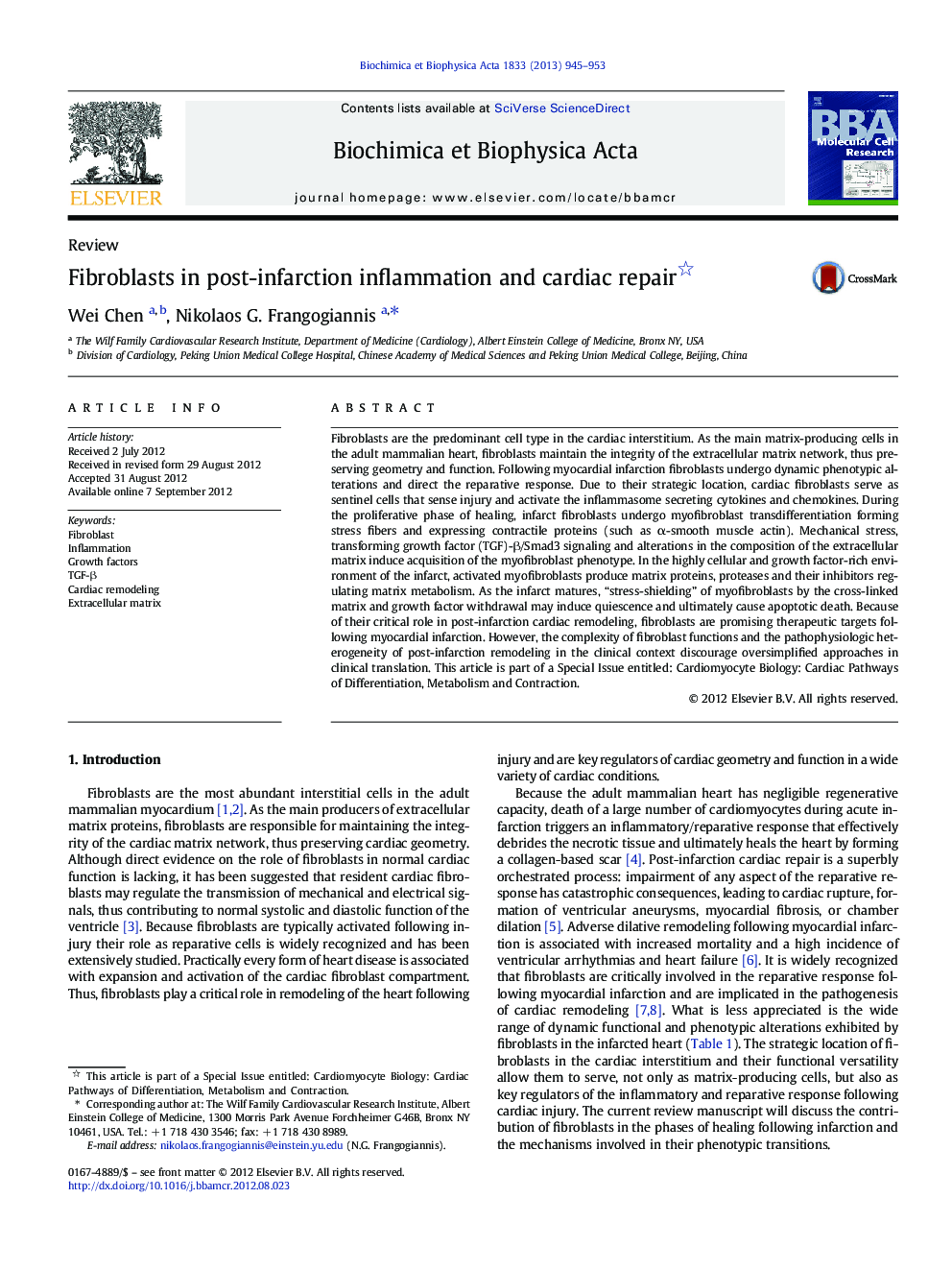| Article ID | Journal | Published Year | Pages | File Type |
|---|---|---|---|---|
| 1950781 | Biochimica et Biophysica Acta (BBA) - Molecular Cell Research | 2013 | 9 Pages |
Fibroblasts are the predominant cell type in the cardiac interstitium. As the main matrix-producing cells in the adult mammalian heart, fibroblasts maintain the integrity of the extracellular matrix network, thus preserving geometry and function. Following myocardial infarction fibroblasts undergo dynamic phenotypic alterations and direct the reparative response. Due to their strategic location, cardiac fibroblasts serve as sentinel cells that sense injury and activate the inflammasome secreting cytokines and chemokines. During the proliferative phase of healing, infarct fibroblasts undergo myofibroblast transdifferentiation forming stress fibers and expressing contractile proteins (such as α-smooth muscle actin). Mechanical stress, transforming growth factor (TGF)-β/Smad3 signaling and alterations in the composition of the extracellular matrix induce acquisition of the myofibroblast phenotype. In the highly cellular and growth factor-rich environment of the infarct, activated myofibroblasts produce matrix proteins, proteases and their inhibitors regulating matrix metabolism. As the infarct matures, “stress-shielding” of myofibroblasts by the cross-linked matrix and growth factor withdrawal may induce quiescence and ultimately cause apoptotic death. Because of their critical role in post-infarction cardiac remodeling, fibroblasts are promising therapeutic targets following myocardial infarction. However, the complexity of fibroblast functions and the pathophysiologic heterogeneity of post-infarction remodeling in the clinical context discourage oversimplified approaches in clinical translation. This article is part of a Special Issue entitled: Cardiomyocyte Biology: Cardiac Pathways of Differentiation, Metabolism and Contraction.
► In normal hearts cardiac fibroblasts maintain the integrity of the extracellular matrix. ► In the infarcted heart fibroblasts activate the inflammasome and secrete cytokines. ► In the healing infarct fibroblasts transdifferentiate into myofibroblasts. ► Myofibroblasts secrete extracellular matrix proteins and regulate matrix metabolism. ► As the infarct matures, myofibroblasts become quiescent and undergo apoptosis.
